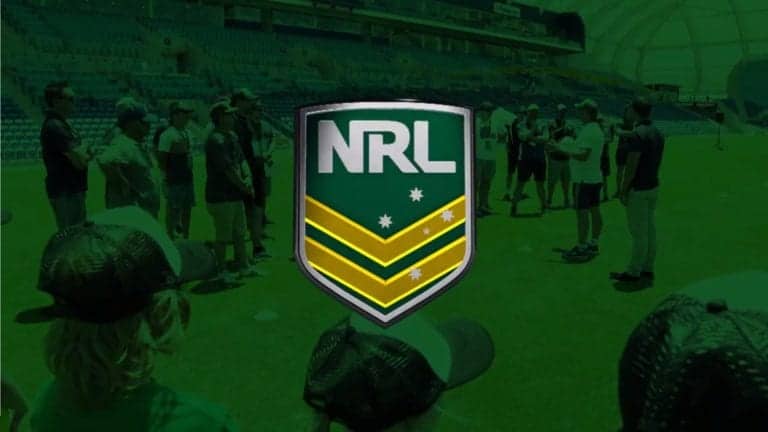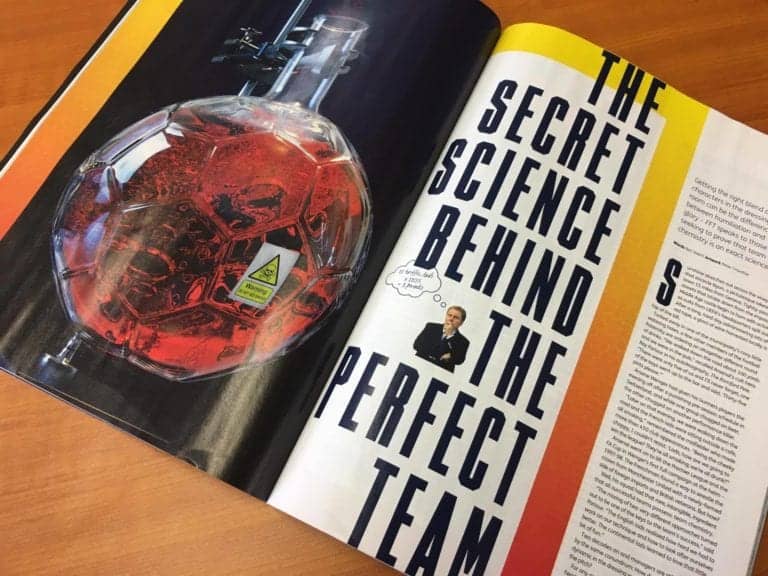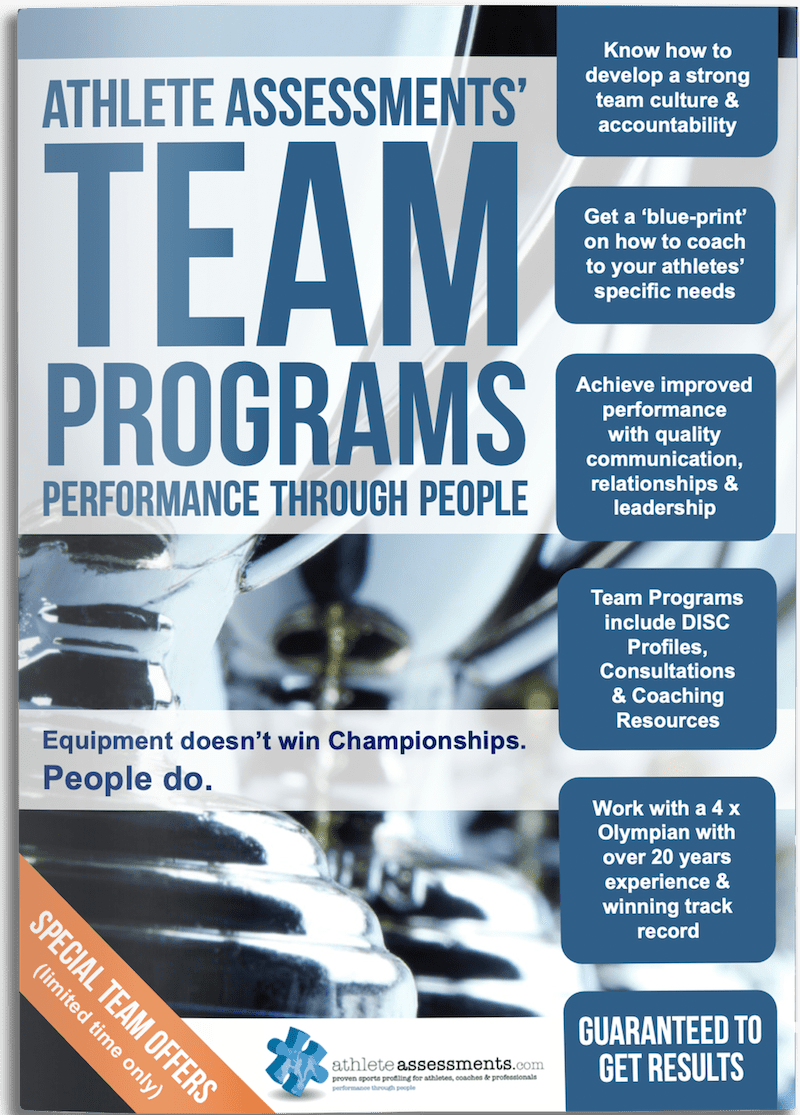I am often asked by many of the teams we work with, “How can we avoid conflict within our team?” But the truth is, you can’t. However, there is a simple solution for managing it.
Conflict occurs in teams every season and often the main causes of that tension are players crossing over into each other’s territory, overstepping their role, or doing someone else’s job. This is why TRUST is a defining factor in successful teams. If you trust your fellow team members, you trust they will do their job, and they trust you will do yours.
Importantly, trust can be built through developing an understanding of one another and their position within the team.
When we talk about team roles, we look at both technical and non-technical roles as being equally critical to a team’s success. While technical roles are the position an athlete plays on the field, non-technical roles refer to how the athletes make (or don’t make) a contribution to the team beyond their technical position. Great sports teams are often likened to a ‘well-oiled machine’, but the defining difference between a sports team and the analogy of a car engine is, car engine parts can’t contribute beyond their technical role. They can’t communicate, relate, care for, lead, direct, build relationships, plan, organize, teach, mentor, or be a role model for their fellow parts. (Well, perhaps one day through the use of nanotechnology.) However, in a sports team we need our individual team members to contribute beyond just the number on their back.
Why is this the case? What if in your team, none of your team members did any of the previously mentioned things, what would happen? Here’s an example: if a new team member momentarily forgets a particular tactical play during a game, if you have no one on the team who is prepared to direct, communicate, and guide that individual player then they will not learn or execute the play next time. Instead, the coach will pull the player from the field, further damaging their sense of esteem.
Another example of a critical non-technical role is what if at training, no one on your team accepted the leadership role, what would happen? Or even worse, they did accept the role, but they’re not performing it? The team would struggle with on field direction, lack motivation, and the culture would deteriorate into an individualistic style culture where team members lack care and concern for each other.
Team culture and chemistry relies on a team’s players performing their non-technical roles with as much care and drive as their technical roles. But in order for these roles to be filled and assigned effectively, coaches also need to understand what their athletes bring to the field beyond their technical position, and how to best utilize this within the team. Read more about this topic in our article Players Value Beyond their ‘Position’.
What Roles are Required for Team Success?
There has been a great deal of research on what roles are necessary for team success. We know from using the DISC Model with thousands of teams and players, that for a team to have a healthy chemistry all DISC Profiles must be represented. Each DISC Style is going to play a particular role which falls in line with their preferred behavioral style. However, while each person can also adapt and play roles which extend beyond their style if the team requires, it’s important to note that a player will struggle to consistently play a role they are naturally not well suited for.
Breaking this into the DISC Team Roles, each DISC Style is responsible for ‘driving’ certain roles. It works as per the below table.
DISC Style (Natural)
Role
Behavior on Team
Dominant Style
Goal Driver
Influencing Style
Energy Driver
Steady Style
Relationship Driver
Conscientious Style
Process Driver
As you can see in the table, the roles are entirely different and there is little overlap. Theoretically and in practical terms, while it is normal to be highest in one particular style, most people are a combination of two, or sometimes, three of the DISC styles. What this means is team members can bring a combination of non-technical abilities to the team. For example, a player could be a natural I/D style, and as such they would best fill a role relevant to these behaviors.
It’s important to take into consideration their AthleteDISC Profile results when choosing what non-technical role an athlete will play, as if you ask a player to fill a role they are not suited for from the perspective of their DISC style, you are asking them to perform actions and behaviors that do not come naturally to them. For example if a player who scores highest in the Dominance (D) style is asked to fulfill the Conscientious (C) style role on the team, you are basically asking someone who prefers to behave in a goal--orientated manner to become more process driven, detailed, and organizationally focused.
Throughout our involvement with many teams, we are yet to see this occur and be effective. However, we have been able to educate the coach on this and they have in turn adjusted the player’s role to suit them. Making an athlete play a role not suited to them is especially ineffective when in the competition environment, the consistent need for adaptation can compound stress and negatively impact the player’s performance. However, it’s important to note that we do not look at adaptation as a whole negatively. While it is equally important for players to be able to analyze situations or environments and choose to behave in a way that will achieve the best result, which may not always be their preferred style. Research has proven (and our experience shows us) that people can adapt momentarily, or for a short, specified length of time, but if athletes are forced to act in a way that is not natural for them, eventually they may resent their role on the team and will perform poorly enough to no longer be part of the team, if they do not leave first and join another team where their contribution can be valued.
Want to learn more?
Watch Bo Hanson discuss DISC and roles in a team
Summary
In summary, appreciating the importance of non-technical roles is critical in developing a high performing team. Assigning roles or encouraging players to gravitate to a role which suits them is the key to ensuring you gain the most from your individual player’s involvement. As a coach, a large part of your role is integrating your players effectively so that the sum total of their contribution is greater than the mathematical sum total.
1+1+1+1+1+1+1+1 = ?
The answer to this equation is dependent on how well you have derived maximal contribution from your individual players. For some teams this equation adds up to five despite there being the potential for a minimum of eight. A high-performance team will have this equation add up to a number greater than eight, maybe 10. When this happens, you are on your way to being an incredibly successful team.
For more information, see our articles on ‘Players’ Value Beyond their Position’ and ‘Pre Season Preparation and using the GRIP Model’.
The most efficient way to ensure that your athletes are performing non-technical roles that are most suited to them is by matching their contribution to their profile. Athlete Assessments’ DISC profiles are generated from a 12-minute online survey, the resulting individual 40-page profile heightens the athletes’ self-awareness and provides clear information and coaching insight. Profiles detail the pace an athlete prefers to go about their daily activities, how they tackle obstacles and problems, follow rules and processes, and how they like to communicate and build relationships. Importantly, each profile will also layout precisely how each athlete contributes, what they want and what motivates them, this information feeds into the ideal environment for that athlete to deliver their best performance.
At Athlete Assessments, we’re here to provide you with excellence in service and here to help you be your best. If there is anything we can assist you with, please Contact Us.
Recommended Articles
Recently published research out of Queensland University of Technology proves that it’s possible, plausible, believable and appropriate, to adapt your behavior to suit the situation. Importantly, the research shows that the momentary adaptations have no negative impact or consequences for the individual.
Dr LaTisha Bader, Certified Mental Performance Consultant on using Athlete Assessments’ DISC Profiling to develop self-awareness and team chemistry.
Every team has a culture, some cultures support high-performance while others simply grow around dominant personalities in the team. In this video, Hanson simplifies the dialogue around culture in sport with a succinct definition of the term. He describes what culture looks like, and how to identify it in the sporting context. Together, Hanson and Antoniolli talk about a Coach’s role in guiding team culture. They question whether the team or its individual players’ level of skill and experience has a bearing on team culture. Hanson examines the fundamental components of a successful culture and explains what can happen when a team culture is left to develop on its own.
Team culture – a definition, an explanation of what it looks like in a sporting context and a guide as to how Coaches can identify what their team culture is. By Mim Haigh, Sports Writer – Athlete…
When the world’s biggest football magazine, FourFourTwo, took a look at team chemistry, writer Ben Welch spoke to premiership winning players, like Crystal Palace midfielder Yohan Cabaye and Celtic’s Musso Dembele for their insight into the unbreakable bonds that build team chemistry. He also spoke to Arsenal’s premiership winning Coach,
When you look at the athletes in your squad or team, what do you see? Do you just see the number on their back? Do you see their technical ability, and how this translates into their performance? Is there anything an athlete can contribute beyond their technical contribution? Have you ever thought about the impact certain players have on the rest of their team, especially when they are not there?












2 thoughts on “Defining Team Roles: A Critical Component of Managing Conflict”
Pingback: The Glory Of The Role Player | Sports Vision
Pingback: Unsafe vs Uncomfortable: 5 Minutes with Bo Hanson | Athlete Assessments